
Introduction
The Natya Shastra is the earliest and pioneer documentation on drama and performance art. Bharata Muni wrote the Natya Shastra somewhere around 500 BCE and 500 CE. However, it remains the most authentic dissertation, the foundational bedrock on which all the Indian Classical dances, drams and music, are based. The entire encyclopaedic treatise has 36 chapters with around 6000 poetic verses that describe the performing arts. There are many parts and elements to the Natya Shastra, however, one of its most important components is the Rasa theory.
What is Natya Shastra?

Natya Shastra comes from two Sanskrit words, ‘Natya’ meaning an ‘act’ and ‘Shastra’ meaning a manual or rules. It is the oldest surviving document on performing arts and has survived the ravages of time to still continue to be relevant. It has manuscripts and as per historians has been edited too along the ages. It is estimated that the first 12000 verses were originally written and different chapters are dedicated to different aspects of the arts.
Rasa Theory in Natyashastra
Chapters 6 and 7 explain the Rasa theory, and chapters 8 to 13 are about the skill of acting, which also include dance movements, stage instruments, customs, etc. Chapters 14 to 20 talk about the plot and language of expression. Chapters 17 and 18 are attributed to poetry and the delivery of the speech and so on. The final chapters are dedicated to the different characters, teamwork, the workings of a troupe, etc.
Understanding the Rasa Theory

There is an amazing amount of information and knowledge that is held in the folds of the Natya Shastra. However, we are going to try and concentrate on one of its most unique and magnificent discourses – The Rasa Theory.
The Rasa Theory is explained in chapters 6 and 7 and is one of the most important parts of Natya Shastra. This is because it in essence explains the purpose of the art. It propagates the aesthetic significance of the visual or musical art that in turn touches the deepest human emotions.
What is the Rasa Theory?
Rasa comes from the Sanskrit word meaning ‘nectar or taste or flavor.’ However, artistically it essentially means the emotions and feelings that we go through when we experience any art form. And hence it means the taste or essence of the artwork that an audience derives out of watching it. According to Bharata Muni, composition or art of any kind cannot proceed without rasa. A vital task of the performer is to entice and inspire emotions in the viewer. Thus, rasa is the sentiment that arouses an audience and this feeling goes on to connect the performer and viewer with divinity. Realising divinity can be achieved by the performer through the performance of the art, and for the viewer by the observation of the art.
What are the Bhavas?
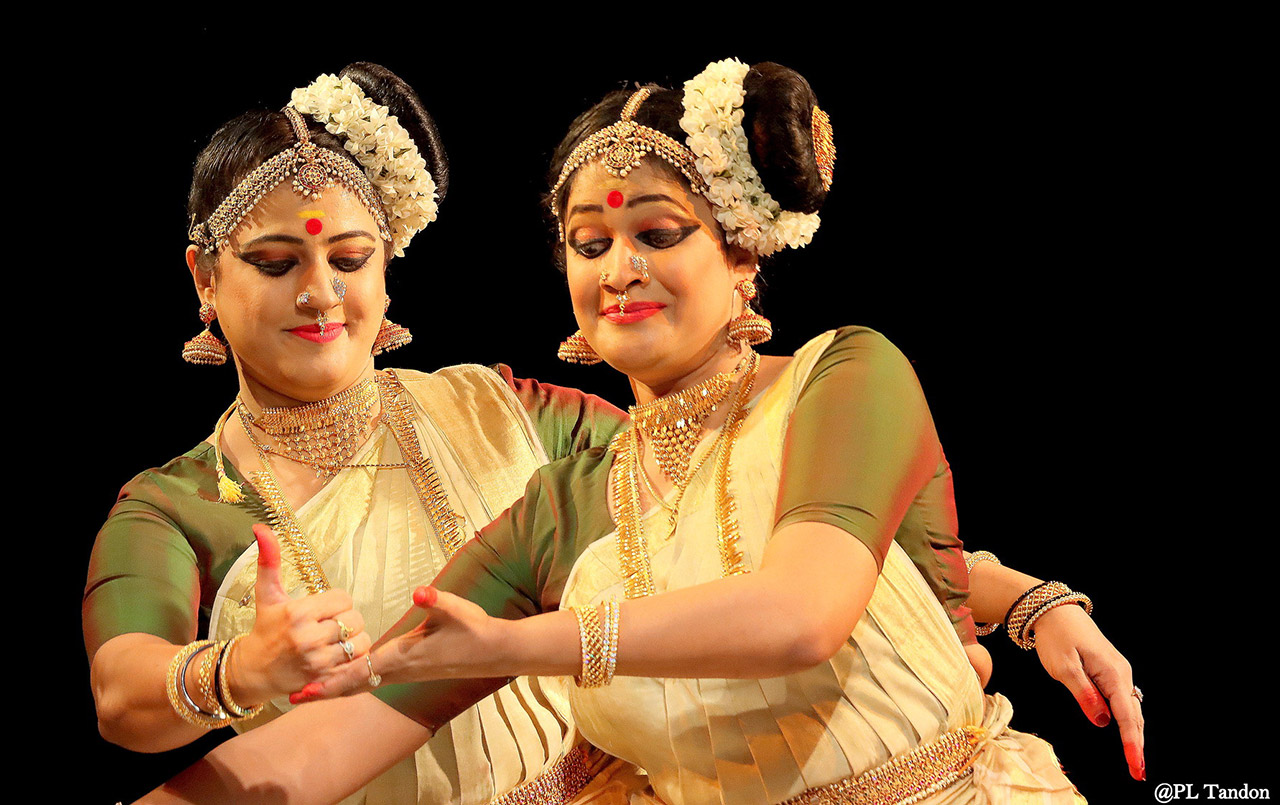
Bhava and rasa are both important aspects of performance and are interrelated to each other. Bhava is the state of the mind, a mental disposition or attitude of the mind. The bhavas of the performer are responsible for the rasa of the audience.
What is Sthayi Bhava?
The Sthayi Bhava is referred to as the permanent or dominant emotion. But when the Sthayibhava along with the other three bhavas – Vibhav, Anubhav, and Vyabhikaribhava unite together, the resultant effect is the attainment of Rasa.
What are Vibhavas?
Vibhavas are the motivation that includes the storyline, the actors, and the stage, that awake the sthayi bhava. Anubhavas are the manifestations of the actors’ feelings and the vyabhikaribhavas are the transient sentiments. The Sattivc bhava is the involuntary emotions or expressions that are accompanied while experiencing the performance.
What is the Relationship Between Rasa and Bhava?

Let us try and understand the interrelation between bhava and rasa through a few examples. If a beautiful girl comes up on stage the bhava that is emoted is vibhava. Her gestures, glances and moments lead to anubhavas. Now if the main mood of the performance is love, then joy and happiness are the transient emotions or vyabhikaribhavas. If the story is about separation then the vyabhikaribhavas is pain and anguish. The sattvic bhavas are involuntary expressions, such as blushes or perspiration. Because of all these bhavas, the sthyaibhava of the viewer changes into rasa.
How Many Types of RASA are there?
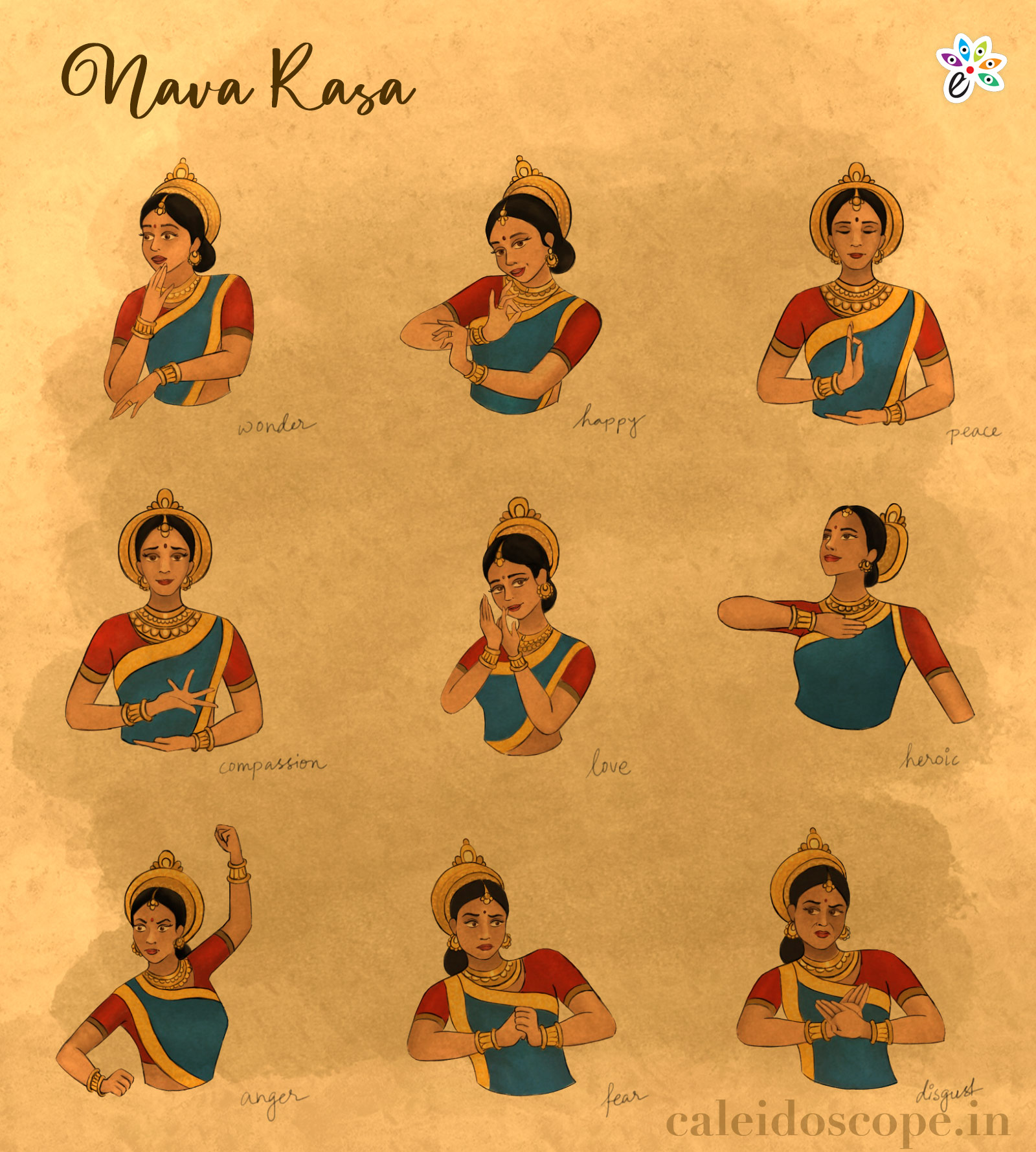
There are many types of Rasas. Most historians agree that Bharata Muni’s Natya Shastra had eight types of rasa. The ninth rasa was added by Abhinavgupta. Each rasa has a color and a deity attributed to it. Here is taking a look at the nine different types of rasa.
List of Rasa (Navarasa)
| Rasa | Explanation |
|---|---|
| Shringara | The rasa of love, beauty, and attraction, often represented by romantic or sensuous emotions. |
| Hasya | The rasa of laughter and joy, bringing out humor and happiness in performances. |
| Karuna | The rasa of sorrow and compassion, evoking feelings of empathy and sadness. |
| Raudra | The rasa of anger and fury, conveying intense emotions of rage and violence. |
| Veera | The rasa of heroism and bravery, portraying courage and strength in adversity. |
| Bhayanaka | The rasa of fear, conveying dread and terror in response to dangerous situations. |
| Bhibhatsa | The rasa of disgust and loathing, evoking revulsion and horror. |
| Adbhuta | The rasa of wonder and amazement, often inspired by the unknown or mystical. |
| Shantha | The rasa of peace and tranquility, symbolizing calmness and serenity. |
1. Shringara Rasa
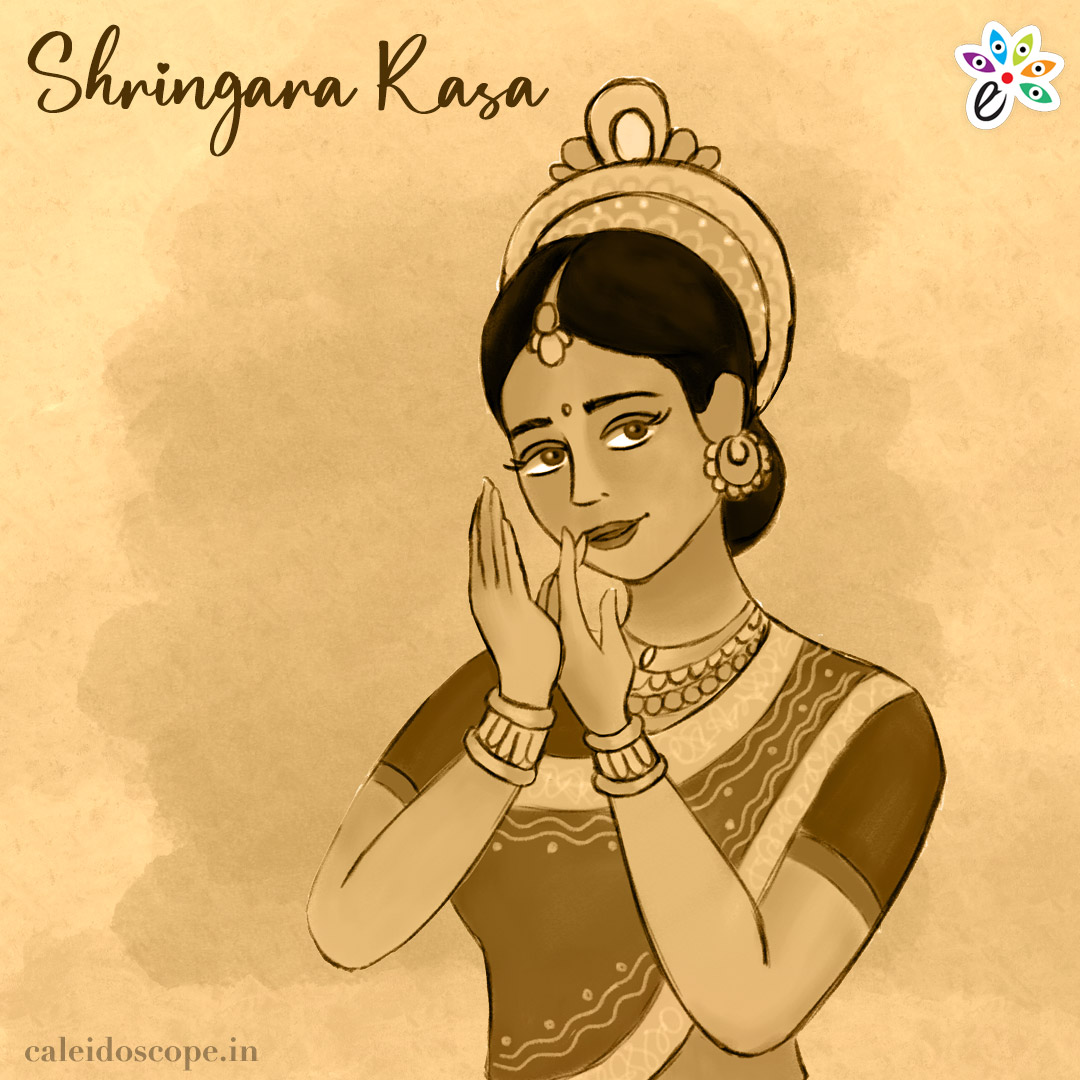
This rasa deals with romance, attractiveness, sexual desire and erotica. Here the sthayibhava is love. The sentiment of passion and love, the shringara rasa is affiliated with Lord Vishnu and has the color dark blue or green. The main idea is the portrayal of love between a man and a woman. However, the metaphor often transcends to the relationship between the individual and the divine. Most Classical dancers call the shringara rasa the ‘mother of all rasas.’Through this rasa, there is scope to express a plethora of emotions, including compassion, anger, jealousy and physical closeness.
2. Hasya Rasa
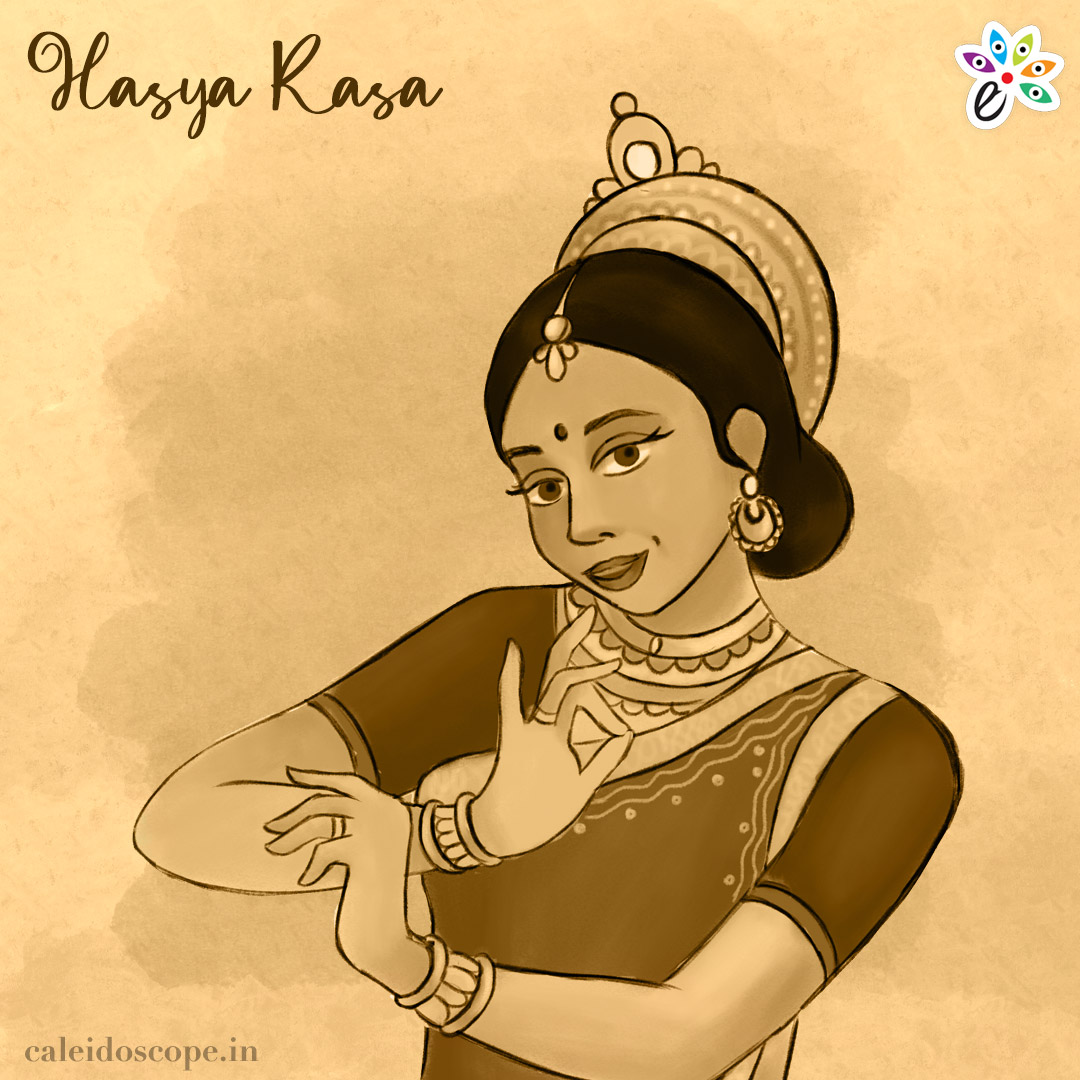
Hasya rasa refers to the feeling of laughter, comedy and joy. The color of this rasa is white and the deity associated with it is Pramatha or Shiva. This rasa usually arises from the shringara rasa. It is performed through comic dressing, ornaments, etc.
3. Karuna Rasa
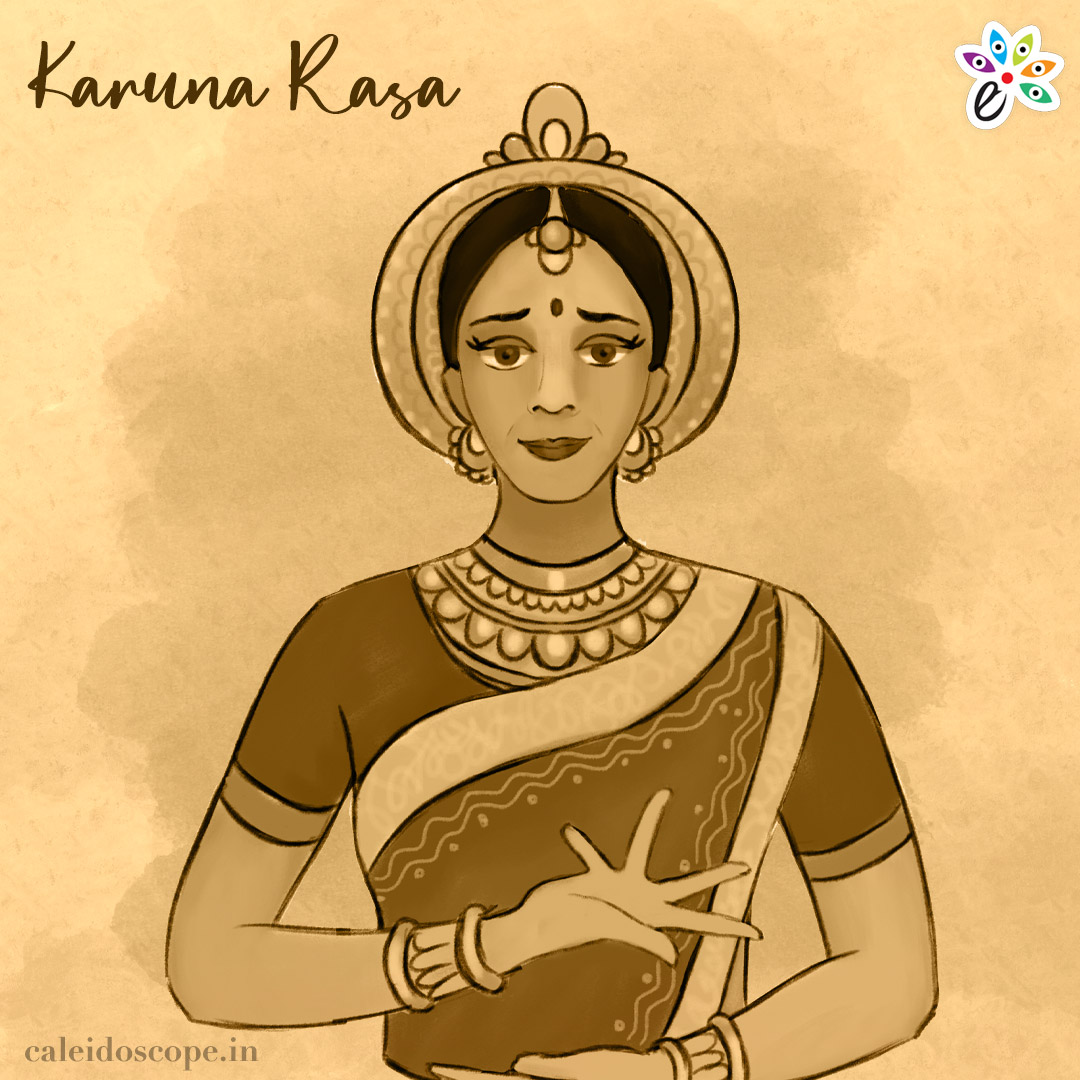
This rasa signifies sympathy, grief, and mercy. Its color is Grey and the deity it associates with is Yama. A character experiences pain or grief due to the passing away of a loved one or because of an undesirable event. The performer portrays the emotion through a dejected face and actions which lead the audience to experience the karuna rasa.
4. Raudra Rasa
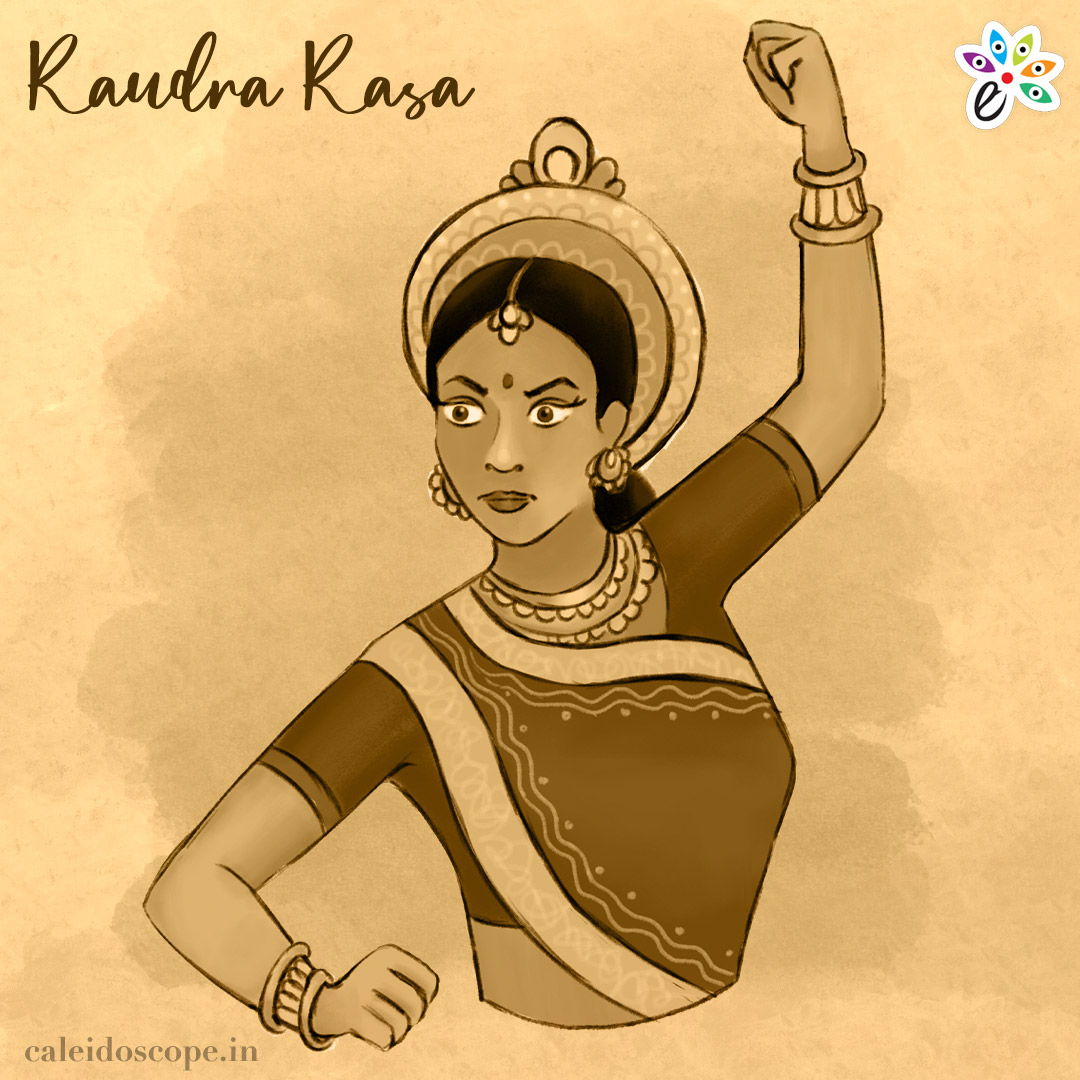
Raudra or Rudra rasa manifests rage, anger and wrath. It is associated with the color red and the God Rudra. The performance could range from topics on rape, jealousy, threats, abuse and more. The redness in the eyes and face, biting of lips, and restlessness are all vyabhikaribhavas.
5. Veera Rasa

Veera rasa is the emotion of bravery and heroism. Yellow or saffron is its color and the rasa associates itself with Lord Indra. Veera rasa is all about determination, energy and self-confidence. It is expressed with the widening of eyes and expansion of nostrils. There are three types of veera rasa – the dana veera (for the person who is a veer after donating gifts), daya veera (for the person who is sympathetic to all creeds and classes) and yudha veera (for the person who is courageous and brave.)
6. Bhayanaka Rasa
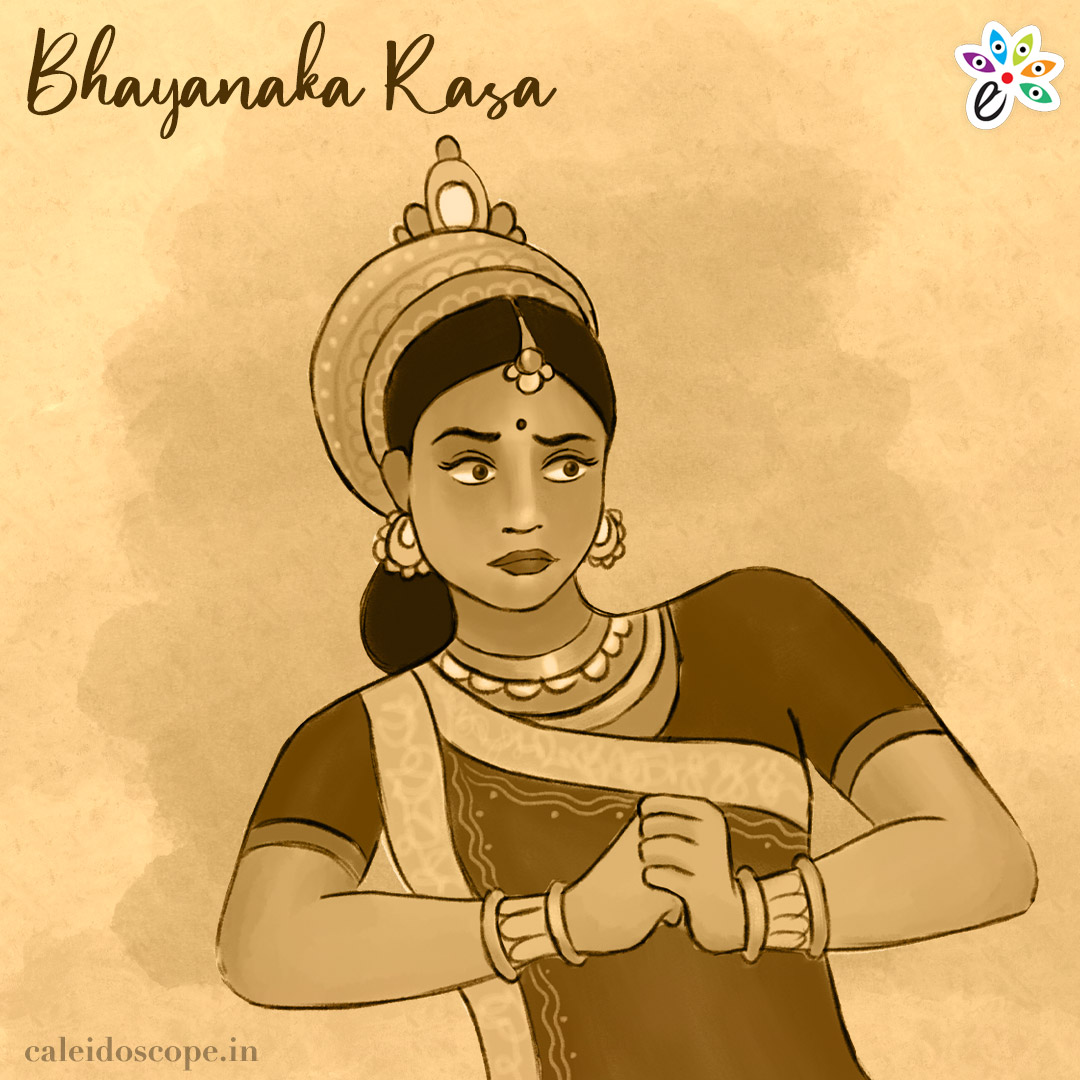
This rasa expresses fear. Its color is black and the deity it associates with is Kala, the God of Time. Bhayanaka rasa is the feeling of panic that can be brought about by danger or the anticipation of danger. To express this emotion performers raise their eyebrows, quiver their eyes, look from side to side, flare their nostrils, etc.
7. Bhibhatsa Rasa
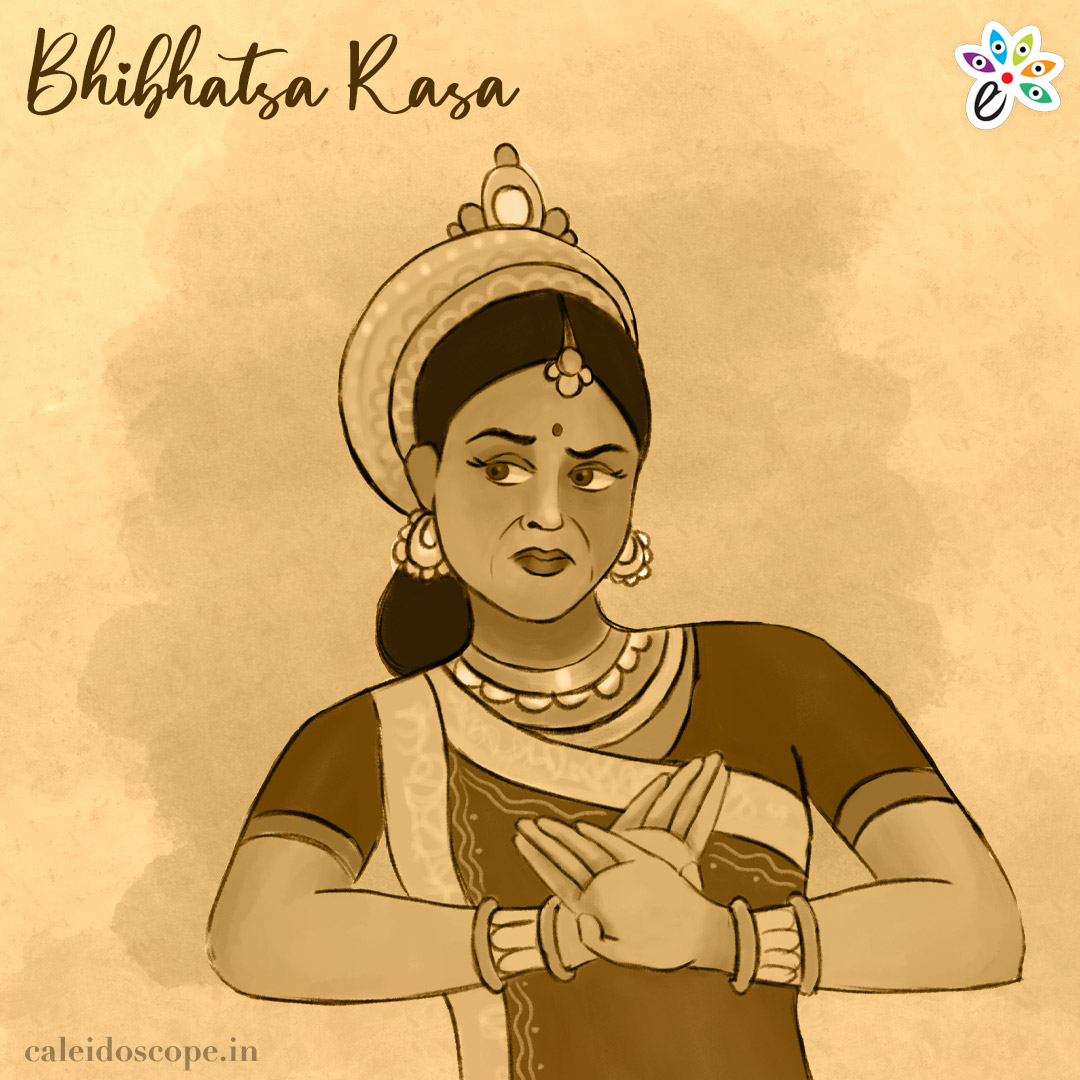
Bhibhatsa rasa manifests the emotions of hatred and disgust. The color blue and the God Mahakala are associated with it. It is expressed on stage by squeezing limbs, rolling the eyes, spitting, or expressing disgust in other ways.
8. Abdhuta Rasa
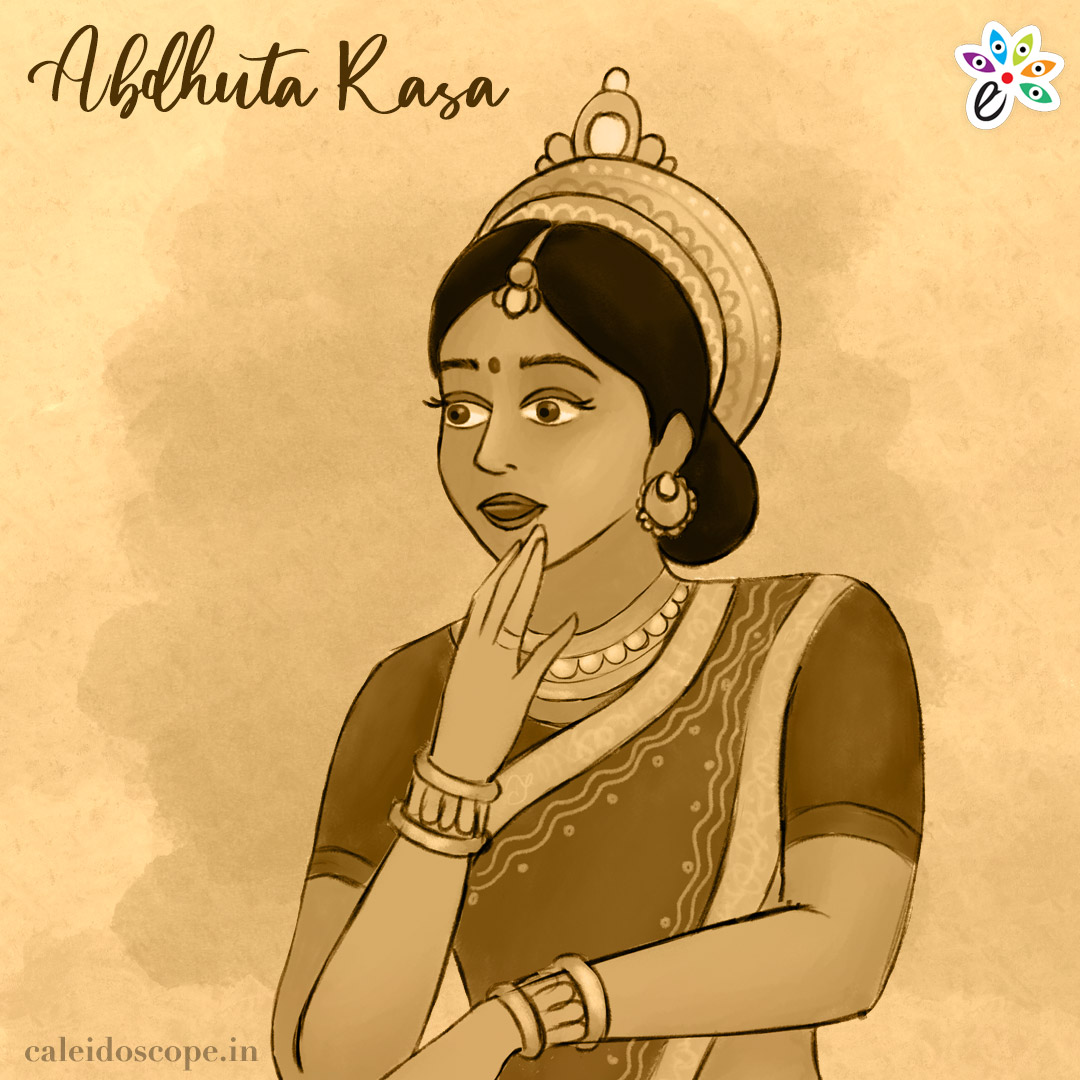
This rasa means feeling wonder and marvel. It is associated with the color gold and the deity Gandharva. The rasa depicts the awe and wonderment that one feels when in contact with beauty or the divine. It is further categorized into Divya Abdhuta Rasa (expressed when seeing the divine) and Anand Abdhuta Rasa (expression of joy).
9. Shantha Rasa
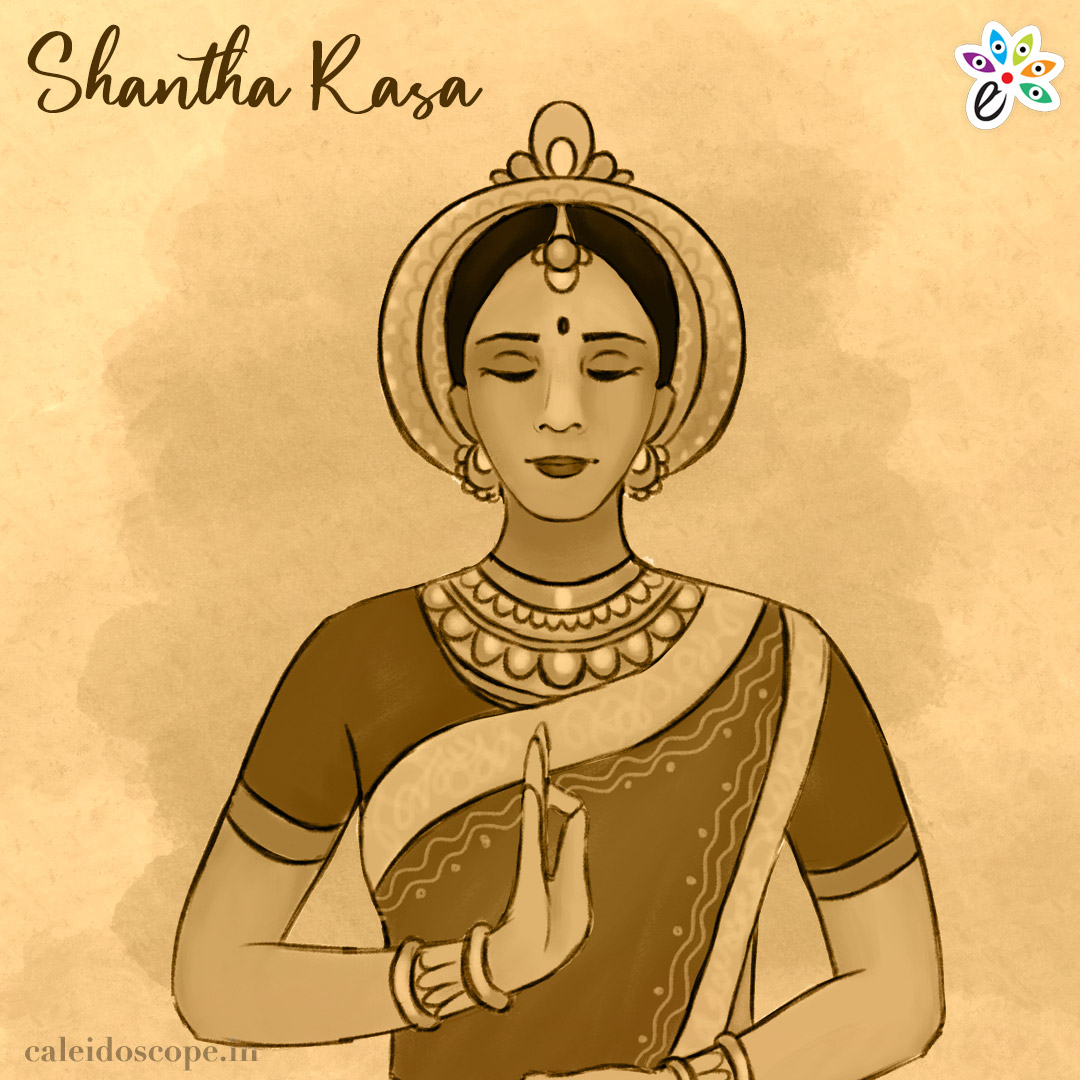
The ninth and final rasa is the Shantha rasa, which most scholars agree was added by Abhinavgupta. This rasa manifests the feeling of serenity, peace and joy. The color Jasmine and Lord Narayana are associated with it. The Shantha or Santam rasa refers to the ultimate emotion of joy and bliss that is often attained on self-realization.
Symbols and Representations of Rasas
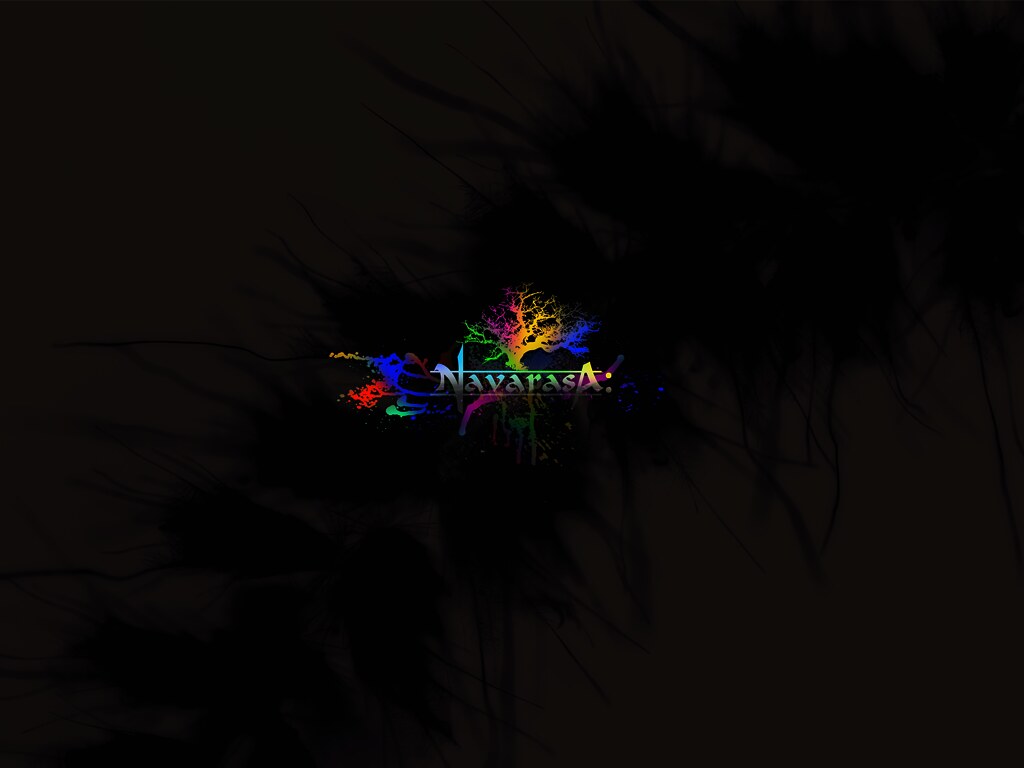
For each Rasa, specific colors, gods, and elements of nature symbolize its emotional nature:
| Rasa | Associated Colors and Expressions |
|---|---|
| Shringara | Green, symbolizing springtime and love. |
| Hasya | White, symbolizing humor and light. |
| Karuna | Grey, symbolizing sorrow and grief. |
| Raudra | Ruby Red, symbolizing fury and rage. |
| Veera | Golden, symbolizing heroism and bravery. |
| Bhayanaka | Black, symbolizing fear and the dark. |
| Bhibhatsa | Blue, symbolizing loathing and horror. |
| Adbhuta | Yellow, symbolizing wonder and curiosity. |
| Shantha | White, symbolizing calmness and purity. |
Significance of Rasas in Indian Classical Arts

Rasas are the heart and soul of Indian classical performing arts, especially for dances such as Bharatanatyam, Kathak, and Odissi, and in classical music and drama. For instance, a dancer performing a love scene in Bharatanatyam will have to enact a Shringara Rasa, which evokes love in the viewer’s heart.
In Indian classical music, Rasas govern the mood of a composition. Specific ragas are tied with individual Rasas, and so music becomes an emotional experience for the listener. Thus, Yaman raga is often used to depict Shringara (love), while Bhairavi sets out to evoke Karuna (compassion).
Rasas in Modern Performances

Rasas originally originated in the ancient context of Indian performing arts, however, they are still used in present times. The use of Rasas allows the artists in Bollywood films and Indian theater, or even in performed dances, to emotionally connect with their viewers. Their ability to evoke Rasas ensures that the performances are not only engaging and emotive but also universally relatable.
The Rasas have also echoed outside India. Western playwrights and directors have adapted equivalent strategies of emotional evocation but the codified idea of Rasas is a special characteristic of an Indian art form.
In Conclusion
The Rasa theory is a fundamental cornerstone of the Natya Shastra. It is also the academic theorization, as well as the manifested execution. One can call it the soul of the performance because it is the rasa that connects the viewer with the performer. And the bond that strikes between the two, elevates the performance to the spiritual realm.
FAQs About Traditional Games of India
Question: What is the Bharatmuni’s Natyashastra?
Question: Who is the father of Natyashastra?
Question: What are the Nine Rasas?
Question: How are Bhavas and Rasas differentiated?
Question: What are the 4 types of acting in Natyashastra?
Few Lines About Rasas in Natya Shastra
- Rasas are the emotional essences experienced by the audience.
- There are nine Rasas, which symbolize different emotions.
- Bharata Muni formulated Rasas in the age-old text Natya Shastra.
- Rasas dictate the mood of Indian classical music and dance.
- Shringara or love is the most predominant Rasa in art.
- Raudra is the Rasa that depicts anger and is mainly used in scenes during a war.
- Bhavas are the way of communicating Rasas.


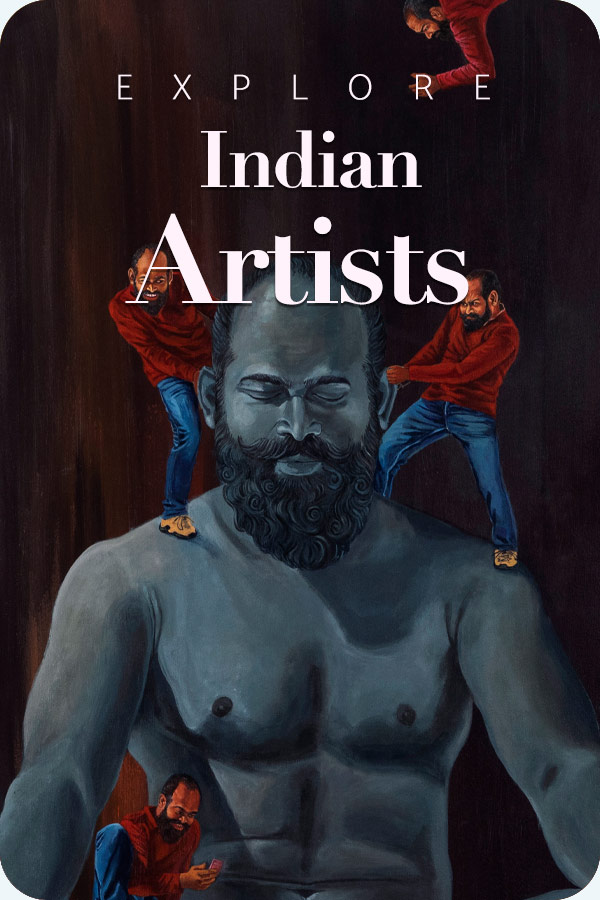

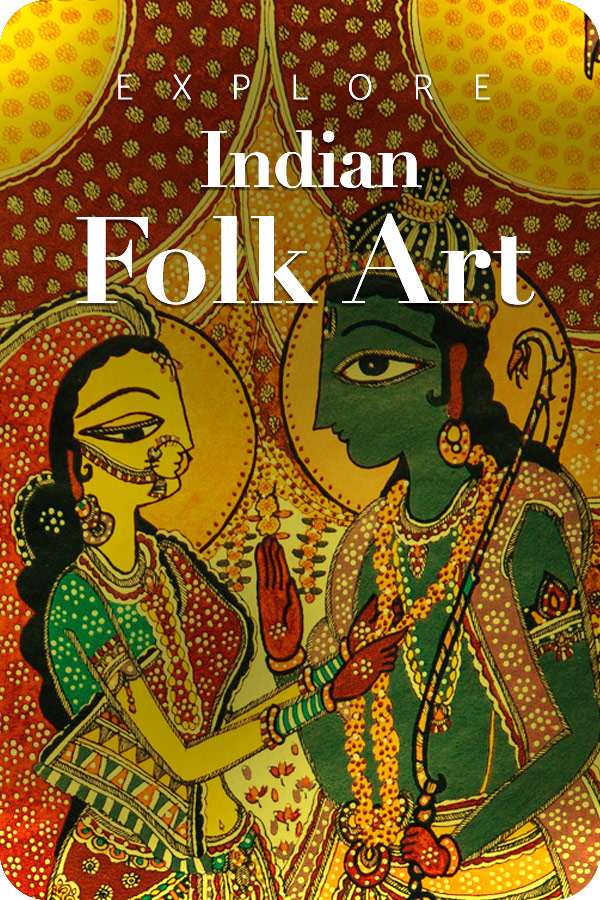
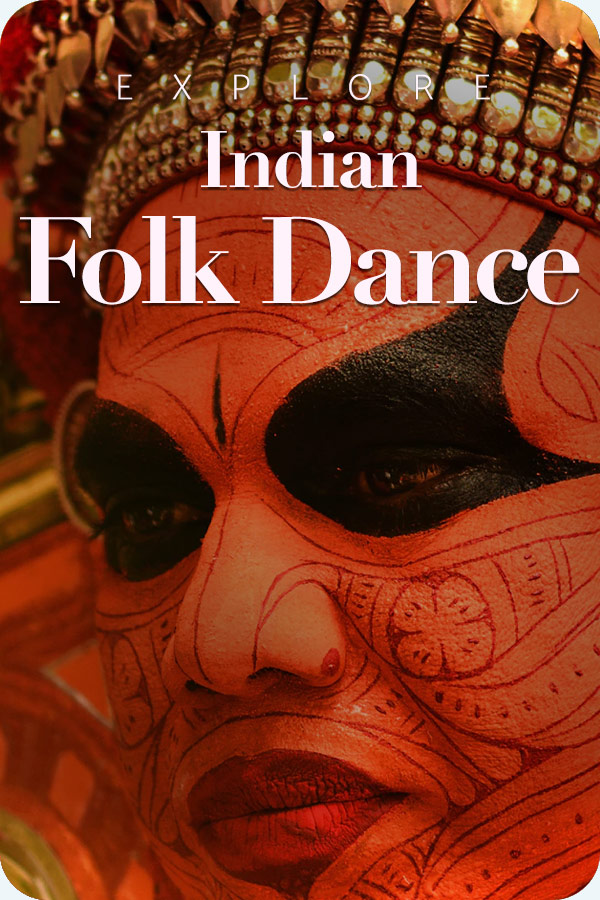

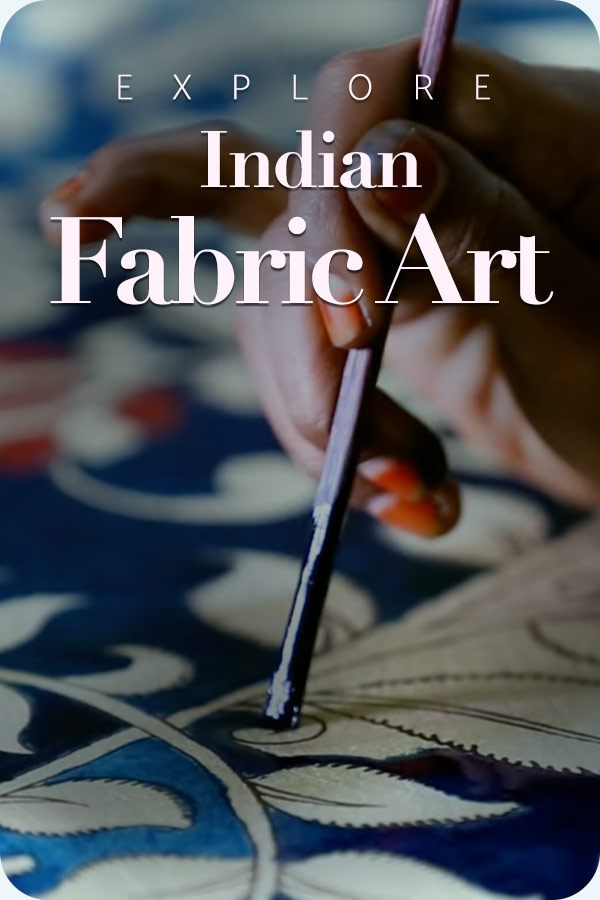
Very informative
Thanks Aarabhi 🙂
Very Helpful And Effective
Thanks Ravi 🙂
Thanks for using my photograph and giving credit for the same. The article is very informative and supported by relevant pictures.
Dr P L Tandon
Bengaluru
Hello Sir, thanks for spending your valuable time on caleidoscope. We are greatful to you for sharing you mindblowing photographs. Very honoured to get your feedback as well 🙂
This article is really appreciable; it has all the information which is being to be noticed along with its photographs.
thanks for providing these details.
Thank you Deepti, your words are encoraging 🙂